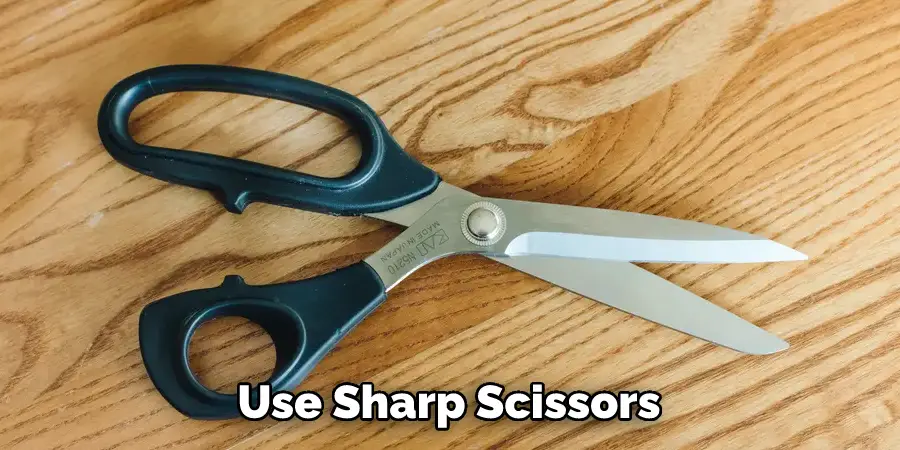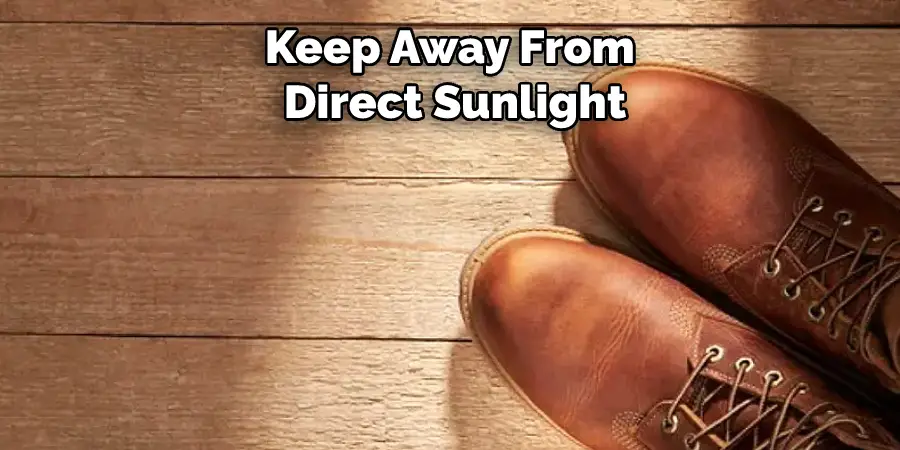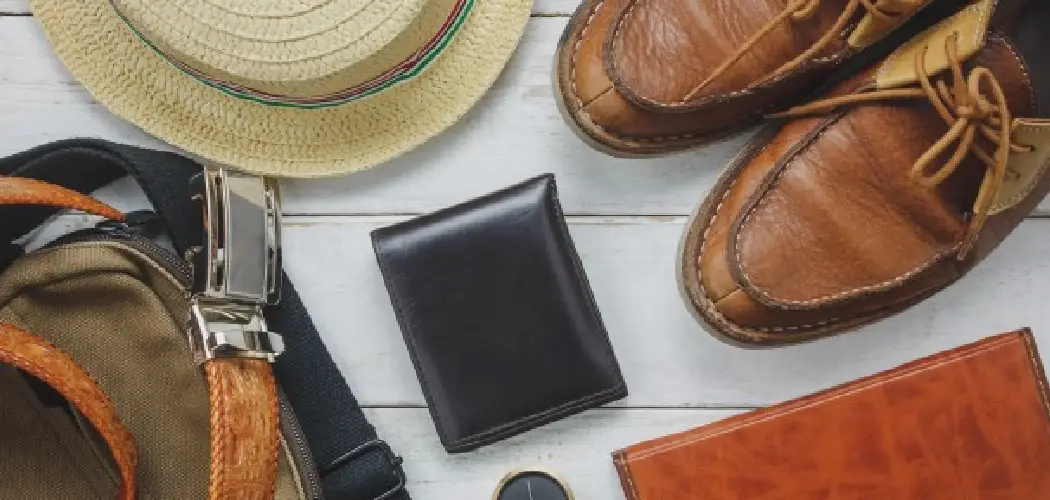Leather accessories are timeless and classic fashion pieces. They look sophisticated and stylish and can last for years with proper care. Making your own leather accessories is a rewarding experience that allows you to create something entirely unique. It’s also an enjoyable hobby that can be done in the comfort of your own home or even at a local craft store.

Making your own leather accessories can be a great way to express creativity and have something unique on hand. Leather is durable and long-lasting, so the items you make with it will last for many years. It is also relatively inexpensive compared to other materials, making it a cost-effective option.
In addition, leather can be easily cut into different shapes and sizes, making it a versatile material for all kinds of projects. Working with leather can also be quite therapeutic, as the process involves careful cutting and meticulous stitching that involve patience and concentration. You can find step-by-step instructions on how to make leather accessories in this blog article.
Tools You Will Need
- Leather
- Rotary cutter
- Hammer and mallet
- Finishing tools (such as an awl, burnisher, and edge beveled)
- Punching tools (such as a hole punch and stitching chisel)
- Needles and thread
- Edger edging tool
- Edge slicker
- Edge paint and beveled
- Sandpaper
Step-by-step Instructions for How to Make Leather Accessories
Step 1: Inspect Your Leather Material
Choose a high-quality leather that is suitable for the project you are making. Make sure to check the material for any defects and marks, as this will affect the finished product. Use sharp scissors or a rotary cutter to cut your leather pieces into the desired shape accurately.

Step 2: Mark Where Cutting Is Required
Mark out the shape you want to cut out on the material with a pencil or fabric marker. If necessary, use a ruler or other straight edge to ensure that your lines are accurate and even. Double-check that all lines are drawn in their correct positions before cutting.
Step 3: Begin Cutting
Cut out your leather pieces with scissors or a rotary cutter. Make sure to cut slowly and accurately, as any mistakes can ruin the entire piece. Cut carefully around any edges that are curved or small. Use fine-grit sandpaper to smooth any rough edges and make them even. This will also help to give your leather piece a more professional finish.
Step 4: Punch Holes in the Leather
Using a leather punch tool, create holes around the edges of your leather pieces where you wish to stitch or attach hardware. The size of the hole should correspond with the hardware you are using.
Step 5: Stitch Your Leather Pieces Together
Thread your needle with the appropriate thread or waxed cord and begin stitching the pieces together. Use a whip stitch, also known as an overcast stitch, to attach the two pieces of leather securely. You can also use rivets if you do not wish to stitch.
Step 6: Attach Hardware to Your Leather Piece
When attaching hardware such as buckles, snaps, or rivets, make sure to use a strong adhesive that is suitable for leather. You can also use double-sided tape if the pieces are not too heavy. Allow the adhesive to dry completely before using your finished piece.

Your leather accessories are now ready to be used and enjoyed! With a little bit of time and effort, you can make unique leather pieces that will last for many years.
8 Safety Tips for How to Make Leather Accessories
- Wear protective gear like goggles, gloves, and a face mask when cutting leather pieces. This will help protect you from debris that could injure your eyes or skin.
- Ensure the leather is completely dry before cutting it, as wet leather may tear more easily than dry.
- Measure twice and cut once! Take your time and get the measurements right before cutting.
- Choose an appropriate type of scissors or knife for the job; heavy-duty ones work best.
- Use sharp blades to ensure a clean cut – dull blades will cause jagged edges and weak lines in the finished product.
- When using adhesives and solvents, work in a well-ventilated area and keep away from flames or sparks.
- If using dyes or paints, wear gloves to protect yourself from chemicals and always apply them in an open area with plenty of ventilation.
- Store your tools and supplies safely when not in use – never leave them in areas where children or animals can get to them.
These tips will help ensure that you make the highest quality leather accessories with safety in mind.
How Do You Protect the Finished Product From Moisture and Extreme Temperatures?
Once you have completed your leather accessory craft, it is important to protect it from damage caused by moisture and extreme temperatures. You should use a protective finish like wax or oil to do this. Wax finishes can seal in dyes, paints, and other colorants while providing a protective coating against water and stains. Oil finishes are long-lasting and provide a beautiful sheen to your craft.
Once you have chosen the proper finish, apply it liberally and evenly to the entire piece with a soft cloth or brush. Allow it to dry for several hours before wear or use. This will help ensure that your leather accessory is protected for years to come. Also, avoid storing in extreme temperatures and keep away from direct sunlight to protect your craft further.
When traveling with leather accessories, be sure to store them securely in a dry and well-ventilated area. This will help prevent damage caused by moisture and heat buildup that can cause cracking or discoloration. If possible, wrap the item in cloth or another soft material for protection.

How Can You Maintain Your Leather Items Over Time?
- Regularly clean your leather items with a damp cloth to remove dirt and dust particles.
- Condition the leather items regularly with a leather conditioner or oil to keep them soft and supple.
- Keep leather items away from direct sunlight, heat, and moisture to prevent fading or discoloration.
- Store leather items in a cool, dry place when not in use.
- If the leather gets wet, let it air-dry at room temperature away from direct sunlight or heat sources. Do not put it near a heater or oven to speed up the drying process.
- Don’t wear leather items in the rain or near water to avoid long-term damage.
- If your leather item gets stained, use a damp cloth and mild detergent to spot-clean it before applying a leather conditioner afterward.
Following these steps will help you maintain your leather items over time and keep them looking attractive. With proper care and maintenance, they can last a lifetime.
How Can You Clean and Care for Your Leather Items?
- Clean the surface of your leather item to remove any dirt or dust using a soft, damp cloth.
- Apply a small amount of leather conditioner to the cloth and rub it over the entire surface of the leather item.
- Let the leather dry completely before using it again.
- Apply a leather protector spray or cream to protect your leather item from future damage. This will help repel dirt and water.
- Store the leather item in a cool, dry place to avoid exposing it to extreme temperatures or humidity that may cause it to weaken or crack over time.
- Reapply the conditioner every six months or so to keep the leather in good condition.
- If your leather item gets wet, dry it as soon as possible and use a leather cleaner to remove any moisture or dirt that may have been absorbed.
- Use a specialized leather cleaner for stubborn stains specific to the type of stain you are trying to remove. This will help prevent any damage to the leather.
- Treat small scratches on your leather item with a special leather touch-up product to help restore its appearance and keep it in good condition.
- If you want to keep your leather looking new, invest in a quality polishing cloth and use it regularly to maintain its shine. Leather polishes are also available to help keep your leather items.
- Avoid using harsh chemicals or abrasive cleaners on your leather item as they may damage the material and reduce its lifespan.
- Finally, keep away from direct heat and light sources to avoid any discoloration or fading of the leather material.

Following these steps will help you keep your leather accessories looking great for many years to come. With proper care and maintenance, your leather item will remain in excellent condition for a long time.
Frequently Asked Questions
Is Leather Crafting Profitable?
It depends on the leather crafting business. However, generally speaking, it is likely that a leather crafting business will be profitable if it has a high demand for its products and if the craftsperson can produce its goods at a low cost. It is also important to note that profitability may vary depending on the region in which the craftsperson operates.
What Accessories Are Made of Leather?
Leather is a durable material made from the skin of animals, most commonly cows. It is often used for products that require a high level of durability, such as clothing, bags, and wallets. Leather is also popular for accessories because it is stylish and versatile. Accessories made of leather typically include:
1. Wallets
2. Handbags
3. Belts
4. Shoes
5. Bags
Can Leather Be Made Without Animal Skin?
Leather can be made without animal skin, but it is typically more expensive and doesn’t have the same feel and texture. Animal skin provides a natural barrier against moisture and weathering, which makes it more durable and resistant to wear. Additionally, animal skin contains natural oils and fats that help make leather soft, supple, and resistant to water damage.
Who Makes Leather Goods?
Leather goods are typically made from the skin of an animal, such as a cow, pig, or horse. The skin is first treated to make it water-resistant and then tanned using a variety of methods to create the desired color and texture. After the leather is tanned, it is usually oiled and treated to prevent it from becoming dry and brittle. Finally, the leather is often finished by staining or painting it to enhance its appearance.
Conclusion
One of the main disadvantages of making leather accessories is the upfront cost. Leather can be expensive, and you must buy tools and materials to make high-quality products. Additionally, if you have little experience working with leather, it may take some time to learn the proper techniques. Finally, leather can be difficult to work with, and you may need to invest in specialized tools and equipment.
In conclusion, making leather accessories is a great way to create beautiful pieces of art that can last for many years. It takes time, patience and practice to perfect your skills, but the rewards are worth it. You can create stunning work with just basic materials and tools with leather. Whether you’re making a simple bracelet or an intricate belt, learning to make leather accessories can be both a fun and rewarding experience. I hope reading this post has helped you learn how to make leather accessories. Make sure the safety precautions are carried out in the order listed.

